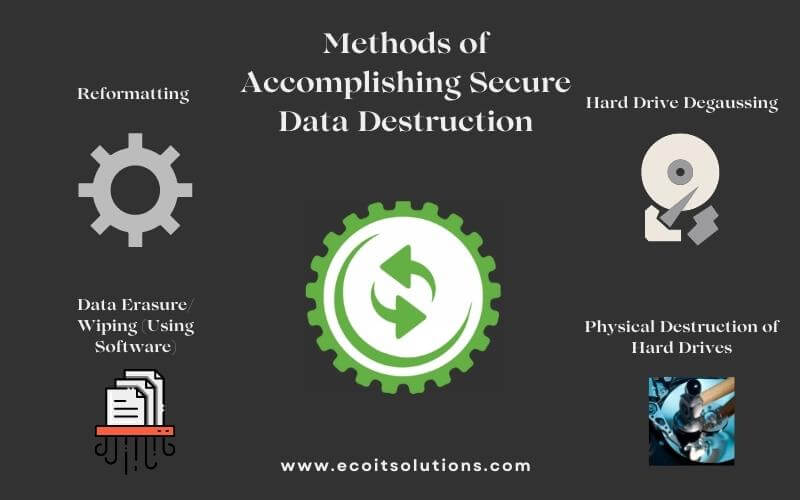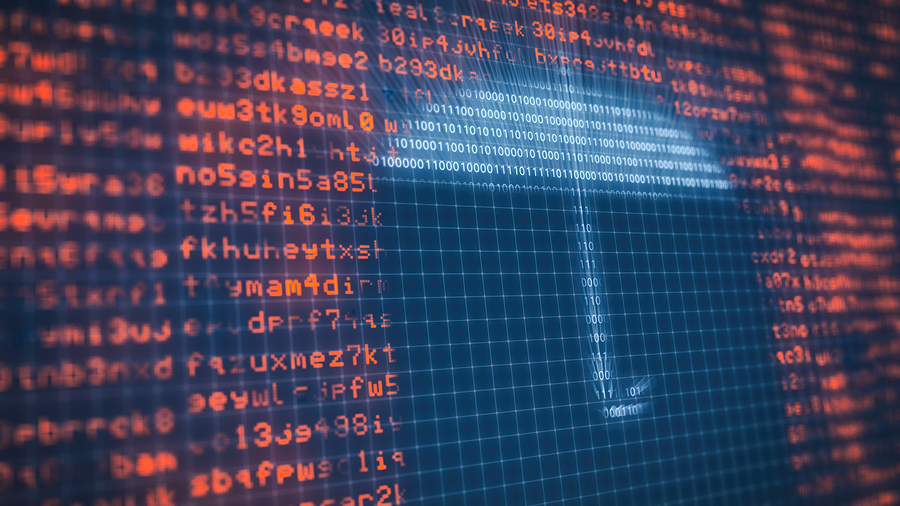How Robust Data Destruction Improves Your Overall Cyber Security Measures
Wiki Article
Checking Out the Value of Information Damage in the Context of Computer Safety Solutions and Protecting Confidential Information
In an age where information breaches are significantly common, the relevance of effective information damage can not be overemphasized. What strategies can companies execute to boost their information damage protocols?Recognizing Data Damage
Information damage is a critical component of computer safety that includes the long-term removal of data from storage tools to avoid unapproved gain access to and prospective information breaches. In a progressively electronic landscape, companies deal with enhanced dangers connected with delicate info being poorly accessed or made use of. Reliable data damage safeguards against these risks, making certain that private dataâEUR" such as consumer information, intellectual home, and financial recordsâEUR" can not be recuperated after disposal.Understanding the significance of data devastation expands beyond mere compliance with regulative and lawful frameworks; it is vital for keeping business stability and trust fund. When information is poorly taken care of or inadequately destroyed, the consequences can be severe, consisting of monetary loss, reputational damages, and legal responsibilities.

Approaches of Information Removal

One widespread method is data wiping, which involves overwriting existing data with random patterns multiple times. This strategy makes the original information irretrievable, making it a prominent option for organizations looking for to secure private details.
One more method is degaussing, which uses a powerful electromagnetic field to interrupt the magnetic domain names on storage space tools, efficiently erasing the data. This approach is specifically effective for magnetic media yet is not suitable to solid-state drives.
Physical destruction is another robust approach, including the shredding or squashing of storage space gadgets. This approach guarantees that information healing is basically impossible, making it excellent for very delicate information.
Lastly, file encryption can act as a corresponding approach to information eradication. By encrypting data before removal, organizations can add an extra layer of security, making sure that even if remnants are recovered, they continue to be unattainable without the decryption trick. Each approach must be picked based on the degree of information level of sensitivity and the certain safety demands of the company.
Legal Conformity and Information Security
Organizations need to navigate an intricate landscape of legal needs connected to data security, particularly after executing techniques of information removal. Different regulations, such as the General Information Protection Law (GDPR) and the Medical Insurance Transportability and Accountability Act (HIPAA), enforce rigid standards on how organizations need to dispose and deal with of delicate data. Failure to follow these regulations can lead to substantial lawful repercussions, including substantial fines and reputational damage.Data damage procedures must be thoroughly documented to show compliance with appropriate legislations and criteria. This documentation not only functions as evidence of adherence to lawful commitments however additionally highlights a dedication to safeguarding sensitive information. Organizations should additionally develop clear plans concerning information retention and destruction timelines, making certain that data is not held longer than essential.

Additionally, routine audits and evaluations of data destruction techniques are important to maintain conformity and adapt to developing legal frameworks (data destruction). By proactively dealing with lawful demands, companies can alleviate dangers connected with data violations and demonstrate their dedication to data protection. Ultimately, focusing on legal conformity web in information destruction processes is not simply a regulative obligation, however a basic element of a robust data safety and security technique
Influence On Organization Online Reputation
The online reputation of a service can be considerably influenced by its strategy to information destruction and monitoring. In today's electronic landscape, where data violations can occur at any kind of minute, the failing to appropriately dispose of delicate info can lead to extreme repercussions. Organizations that improperly manage information destruction threat exposing personal customer info, which not just breaks personal privacy laws yet also wears down trust fund among stakeholders and customers.A damaged track record can cause reduced consumer commitment, as customers end up being reluctant to engage with an organization that has shown negligence in securing their information. Negative publicity surrounding an information breach can have a long lasting effect, as prospective clients could be hindered by the perceived lack of safety and security. This can cause a straight decrease in earnings and market share.
In addition, companies that prioritize data damage as part of their safety method can improve their online reputation by showcasing their dedication to safeguarding sensitive information. By adopting stringent information monitoring techniques, organizations can not only reduce dangers but also place themselves as reliable entities in their corresponding sectors, therefore reinforcing their general brand image.

Ideal Practices for Secure Disposal
Implementing ideal methods for secure disposal of information is necessary for reducing risks linked with data breaches and making certain compliance with personal privacy guidelines. Organizations ought to take on a detailed data disposal plan that lays out procedures for both physical and electronic information damage.For physical information storage tools, such as hard disks, shredding or degaussing is recommended to protect against data page recuperation. Furthermore, companies ought to maintain a chain of custody paperwork throughout the disposal process, making certain responsibility and traceability of disposed things.
For digital data, utilizing software program that sticks to sector requirements for information wiping is vital. This software needs to overwrite existing data numerous times, making recovery essentially difficult. It is also essential to validate the performance of the information devastation process with audits or third-party analyses.
Educating employees on safe disposal techniques adds an additional layer of safety, as human mistake can often result in information direct exposure. Regularly evaluating and upgrading disposal policies makes certain alignment with evolving policies and technological improvements. By applying these best practices, companies can considerably decrease the threat of unapproved information gain access to and improve their general information security method.
Final Thought
Finally, information damage is an essential element of computer system safety services that guarantees the security of secret information from unauthorized access. Carrying out reliable methods of data obliteration, sticking to legal compliance, and recognizing the influence on business reputation are essential parts of a thorough information safety and security strategy. By adopting ideal methods for protected disposal, organizations can cultivate count on with clients and guard delicate data, inevitably adding to a more safe and secure electronic landscape.In an era where information breaches are increasingly usual, the relevance of effective information destruction can not be overemphasized.Data devastation is an essential element of computer system protection that involves the irreversible elimination of information from storage devices to protect against unauthorized access and possible information breaches. Organizations must also develop clear policies relating to data retention and destruction timelines, ensuring that data is not held longer than essential.
By proactively dealing with lawful requirements, companies can minimize dangers associated with information breaches and demonstrate their dedication to information a knockout post safety and security (data destruction). Inevitably, prioritizing legal conformity in data damage procedures is not just a regulative commitment, but an essential element of a robust information protection technique
Report this wiki page